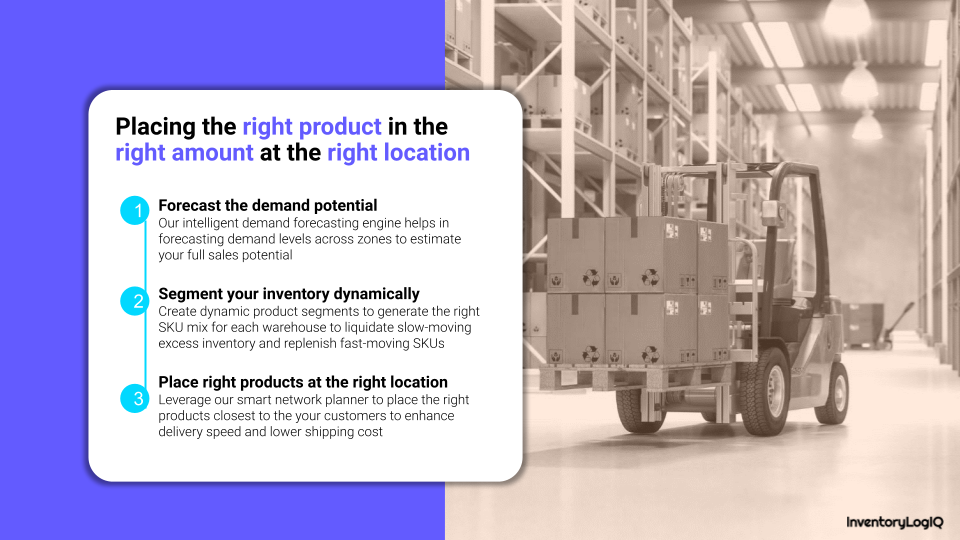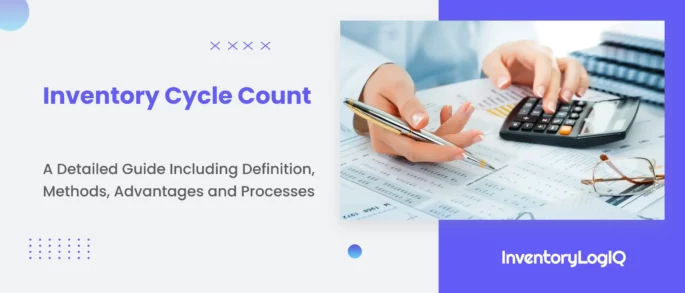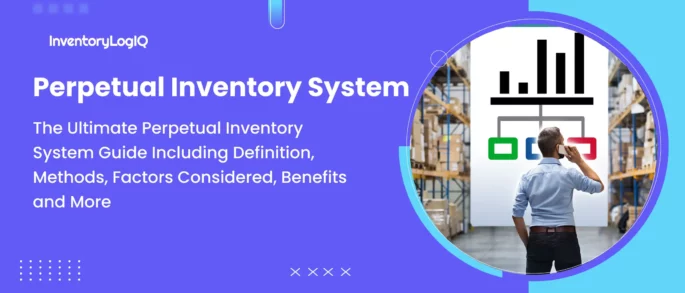Inventory Level: The Ultimate Guide Including Definitions, Benefits and 5 Strategies to Implement a Minimum Inventory Level in 2023
An inventory is the life of any business. It is immensely important in producing and selling products or services. One of the key challenges in managing inventory is determining the optimal level of stock to keep on hand. Having too much inventory can tie up valuable resources, such as cash and storage space while having too little inventory can lead to stockouts and lost sales.
Inventory levels refer to the amount of stock a business keeps on hand to fulfill customer demand. Properly managing inventory levels is crucial for the success of any business, as it can greatly impact cash flow, customer satisfaction, and overall profitability. There are many different types of inventory levels and you need to understand them to help run your business cost-effectively and efficiently.
- What are Inventory Levels?
- Types of Inventory Levels Used in 2023
- How to Calculate Inventory Levels for Optimum Usage?
- Benefits of Having a Minimum Inventory Level
- 5 Best Strategies for Maintaining Stable Inventory Levels in 2023
- Conclusion: How can InventoryLogIQ help achieve a Minimum Inventory Level?
- Inventory Level: FAQs
What are Inventory Levels?
A company holds stocks of products in its inventory, which are its business assets. Hence, inventory levels need to be at the optimum. None of the products can be left unaccounted for or unattended to, as such breaches can cause heavy losses and create confusion over a period of time and across the supply chain. Inventory levels are classified as Minimum level, Maximum level, Danger level, and Average level.
Types of Inventory Levels Used in 2023
Minimum Level
A business always needs to maintain a minimum inventory level to ensure that a sufficient amount of raw materials are readily available for production to continue without any interruptions. Whenever the level dips below the minimum inventory level, it can lead to a production outage. This may cause a dip in the stock levels and sometimes a business can run out of stocks completely. Based on the demand and consumption rates, and the average production time to produce goods, the minimum inventory level can be easily calculated based on a simple formula. It is mentioned below:
Minimum Inventory Level = Average Usage x Average Lead Time (Reordering Level)
The minimum inventory level can vary depending on the type of business. However, the following supply chain elements need to be taken into account:
- Material Type: If there is a standing order that requires a specific type of material, there is no need to keep a minimum inventory level.
- Purchase Time: This refers to the lead time or the time taken by a business to acquire supplies for the manufacturing process. The time is calculated from the order placement stage to the arrival of the supplies.
- Consumption Rate: The material consumption rate is calculated based on the trends in a particular industry but also depends on the data analysis of production history over a specific time period.
- Reorder Level: The stock reordering level depends on the replenishment requirements of the business, which are based on production volumes. This level hovers between the maximum and minimum inventory level and can be easily calculated with a simple formula:
Reorder Level = Rate of Maximum Consumption x Maximum Reordering Period
Maximum Level
While the minimum inventory level has to be maintained at all times to avoid the production process getting affected, the maximum inventory level should never exceed the set level since it can lead to overstocking and raw materials lying idle for an extended period of time. Moreover, maximum inventory levels result in higher storage costs, pilferage, discrepancies in quantities of stock, and other inconsistencies. It is easy to calculate the maximum level using the below formula:
Maximum Inventory Level = Reorder Level + Reorder Quantity – (Minimum Usage x Minimum Purchase Time)
The reorder level can be arrived at using a simple formula:
Reorder quantity = Average Daily Consumption x Average Purchase Time
The key factors to consider while calculating the maximum inventory level:
- Daily consumption of raw materials (on average)
- Average purchase time required to replenish stocks of raw materials
- Availability of storage space
- Reordering quantity
- Cost of holding inventory
- Risks involved such as damage, pilferage, materials turning obsolete
- Fluctuations in raw material prices
- Shelf life of raw materials
- Fluctuating consumer preferences
Danger Level
A business can never afford to have its inventory levels reach the danger level at any time. This is because it means that the stocks of raw materials are running out at a dangerously fast speed. Whenever the inventory levels breach the danger level, the company has to source materials quickly. More often than not, procuring materials from other sources on an emergency basis increases the cost.
Danger levels must be avoided at all costs, as businesses need to look for new, unqualified or unverified vendors, which affects the overall quality of the end product. Moreover, ordering on an emergency basis increases the freight cost, leading to an overall increase in inventory costs. It is wiser to calculate inventory levels in advance to prevent them from reaching dangerous levels. The danger level can be arrived at by using a simple formula:
Danger Level = Average Consumption x Lead Time for Emergency Procurements
Average Level
As the name suggests, the average level refers to the level of raw materials available in the inventory at any point in time. The average level is usually consistent and does not vary unless there is a spike in demand or stocks lie unused due to some extraneous circumstances. It can also dip to the danger level if the procurement of raw materials is affected for any reason whatsoever. It is easy to calculate the average level with a simple formula:
Average Level = Minimum Stock Level + 0.5 x Order Quantity
How to Calculate Inventory Levels for Optimum Usage?
Lead Times of Inventory Production
The lead times of inventory production can be calculated on reordering delays. While considering the lead times of inventory production, the time involved in processing the purchase order and the time the supplier or vendor takes to accept and process the order need to be considered. If the supplier has a practice of accepting orders only once a week, it is advisable to place purchase orders well in advance (at least four days earlier). The extra four days are the buffer time to cover any delays in supply. The delay in supply is calculated by adding the sum of the supply delay to the reordering delay.
Availability of Safety Stock
Safety stock can be easily calculated. It is the sum of maximum daily usage x the maximum lead time or the maximum time a vendor takes to effect deliveries. From this result, subtract the average product usage (daily) and multiply it by the average lead time. The formula is somewhat tricky:
Safety Stock = (Maximum Daily Usage x Maximum Lead Time) – (Average Daily Usage x Average Lead Time*)
* Lead time is calculated as the number of days
You Can Also Read: What is Dead Stock & how to Get Rid of Dead Stock Lying in Warehouses in 2023?
Demand Forecasting
Forecasting demand, also known as demand planning, is arrived at by referring to past data, current trends, and upcoming requirements, all of which help to forecast demand for the future. Accurate forecasting is essential for a business to maintain sufficient buffer stock to fulfill customer orders without having to keep large amounts of inventory lying idle. Forecasting demand is not just about setting a reorder schedule; it is also about using data analysis to help identify set patterns and trends. It helps in adapting to the prevalent dynamic conditions and meeting or exceeding customer demands or expectations.
Also Read: What is Inventory Forecasting?
Benefits of Having a Minimum Inventory Level
Maintaining a minimum inventory level is a common objective for most businesses, as it makes sense. Higher inventory levels mean additional management and higher costs. A right balance needs to be struck between inventory and demand. Here are the benefits of maintaining minimum inventory levels:
Reduced Storage Costs
Holding stocks for long periods of time costs money. The costs include utilities for space and the manpower deployed to manage the inventory. Moreover, holding minimum inventory helps to pay vendors promptly instead of holding huge stocks in inventory, which will lie idle even after the payment has been made.
Simplified Management
It is always easy to manage minimum inventory levels, as the time involved in organising and retrieving inventory is reduced drastically. Moreover, the replenishment process is also simplified and is more efficient if the inventory is shortened. If your business has a high inventory turnover rate, holding minimum inventory levels is beneficial in the long run.
Increased Cash at your Disposal
Having minimum inventory levels leaves you with liquid cash, as acquiring inventory is a costly process. If your business involves expensive products, having heaps of money stored in idle inventory leaves you with hardly any cash to deploy for meeting other expenses. When you replenish inventory levels at almost the same rate you sell your products, the cash inflow matches what you pay for the inventory.
More Space Becomes Available
Due to space and inventory being inversely proportional, you will have more space by having lower amounts of inventory. Businesses should be concerned with holding maximum inventory levels, as the cost per square foot of shelf space increases if there is any space lying unused. Maintaining lower inventory levels requires less demand for space and helps you manage your inventory levels more efficiently.
5 Best Strategies for Maintaining Stable Inventory Levels in 2023
Implement an Inventory Tracking System
An inventory tracking system, like a barcode scanner, is useful for manufacturers to track and manage inventory. Your inventory management system can seamlessly integrate with barcode readers to track the products in stock or transit. You can also store and analyse the data to create reports that provide valuable insights into your inventory’s performance and can help to maintain optimum inventory levels.
Determine Reorder Points
A reorder point (ROP) is the minimum stock a business needs to hold in inventory to avoid stockouts and be able to fulfill orders smoothly. The reorder point’s goal is to maintain inventory levels to meet supply demands. Hence, each time the inventory levels hit the reorder point, an alert is triggered to replenish stocks of raw materials for the specific item. The reorder point is determined based on daily sales volumes or the number of product units sold per day. It also considers the vendor’s lead time, which is the time it takes for materials to arrive. The simple formula for calculating a reorder point is:
Reorder Point = Lead Time Demand + Safety Stock
Use an Inventory Management System
If you deploy the relevant technology to complement your supply chain at all stages, it ensures that your distribution network operates smoothly and without any glitches. Implementing an inventory management system helps sync SKUs and orders to monitor fulfillment centers, sales channels and inventory levels in a centralised location. An efficient inventory management system helps in tracking and managing inventory levels accurately (that results in inventory accuracy) to save precious time .
Communicate Clearly With Your Supplier
You must make your expectations clear by communicating effectively with your vendors. Efficient inventory management depends on maintaining proper stock schedules. Holidays, power disruptions, transit delays, etc., need to be taken into account to avoid delays in scheduling. The finer details of your vendor’s operations need to be integrated with your inventory management system, as vendors play a critical role in the supply chain. Monitoring your vendor’s performance over a period of time is crucial in achieving the best results.
Carry Out Inventory Audits
Inventory audits, or warehouse audits, may take more of your precious time than you bargained for. However, when a huge amount of inventory is involved, mere manual use of spreadsheets to keep track of it just won’t do. You need to automate and digitise your inventory audits to make them consistent and reliable. You can think of syncing your inventory with a reliable inventory storage system to make it more efficient.
Conclusion: How can InventoryLogIQ help achieve a Minimum Inventory Level?
Effectively managing inventory levels is essential for the success of any business. By using tools such as monitoring inventory levels in real-time and keeping safety stock, businesses can ensure they have the right amount of inventory on hand to meet customer demand without tying up valuable resources. As you scale your business, you must keep track of your inventory levels, especially when your plans include opening new warehouse locations and selling across multiple channels, which can become pretty challenging over time. InventoryLogIQ is here to lend a helping hand with matchless inventory management and replenishment solutions that enable you to maintain optimum inventory levels and track inventory across multiple locations.
InventoryLogIQ is an expert in inventory optimization and management, giving its partners all the tools they require to precisely forecast future demand, determine the reorder levels of products based on various factors, automate replenishment triggers to avoid stockout situations and much more. These are some ways in which we can help your company:
Increase Your Operational Capability
We assist you in forecasting events and inventory analytics using tools like ABC inventory analysis and others, so you can set up your business appropriately.
Reduce Inventory Stagnation
In order to prevent bloating of those products in your storage facility, we assist you in identifying things that have been overstocked and have low demand.
Boost Sales Velocity
We help you maintain optimal levels of high-demand SKUs and spotlight high-demand products.
Improve Operations
We offer a variety of automations that can improve many aspects of your inventory management procedure.
Place Your Inventory Correctly
Modern AI and ML algorithms are used by us to make sure the appropriate amounts of inventory are kept in the most appropriate places.











